
Eidsivating was[ when? ] the name of one of the original Norwegian popular assemblies or Things . Historically, it was the site of court and assembly for the eastern parts of Norway. [1]

Eidsivating was[ when? ] the name of one of the original Norwegian popular assemblies or Things . Historically, it was the site of court and assembly for the eastern parts of Norway. [1]
Traditionally, Eidsivating was the court for the population around Lake Mjøsa. Eidsivating was originally situated at Åker gård, the seat of Vang in Hedmark county, Norway. When Norway was united as a kingdom, the first lagtings were constituted as superior regional assemblies, Eidsivating being one of them. These were representative assemblies at which delegates from the various districts in each region met to award legal judgments and pass laws (Eidsivatingloven). Later, during the time of St. Olav, the court was moved to Eidsvold. The jurisdiction of the court was then extended to include Romerike and Hadeland as well as Hedmark. Later Østerdalen and Gudbrandsdalen were also included. [2] [3]
The ancient regional assemblies – Frostating, Gulating, Eidsivating and Borgarting – were eventually joined into a single jurisdiction. King Magnus Lagabøte had the existing body of law put into writing (1263–1280). In 1274, Magnus promulgated the new national law ( Magnus Lagabøtes landslov ), a unified code of laws to apply for the Kingdom of Norway, including the Faroe islands and Shetland. This compilation of the codified Gulating laws (Gulatingsloven) applied throughout the realm was exceptional for its time. This code remained in force until Frederik III, king of the Dano-Norwegian personal union, promulgated absolute monarchy in 1660. Peder Schumacher Griffenfeld prepared a document which would form the King's Law (Kongeloven) dated 14 November 1665. This was codified in the King Act of 1665 which functioned as the constitution of the Union of Denmark-Norway until 1814. [4] [5] [6] [7]

Lesja is a municipality in Innlandet county, Norway. It is located in the traditional district of Gudbrandsdal. The administrative centre of the municipality is village of Lesja. Other villages in the municipality include Bjorli, Lesjaskog, Lesjaverk, and Lora.

Gulen (help·info) is a municipality in the southwestern part of Vestland county, Norway. It is part of the traditional district of Sogn. The administrative center of the municipality is the village of Eivindvik. Other villages in Gulen include Brekke, Byrknes, Dalsøyra, Dingja, Instefjord, Mjømna, Rutledal, and Ytre Oppedal.

The Frostating was an early Norwegian court. It was one of the four major Things in medieval Norway. The Frostating had its seat at Tinghaugen in what is now the municipality of Frosta in Trøndelag county, Norway. The name lives on in the present day Frostating Court of Appeal in Norway.

Magnus Haakonsson was King of Norway from 1263 to 1280. One of his greatest achievements was the modernisation and nationalisation of the Norwegian law-code, after which he is known as Magnus the Law-mender. He was the first Norwegian monarch known to have used an ordinal number, although originally counting himself as "IV".

Hedmarken is a traditional district in Innlandet county in Eastern Norway.
Medieval Scandinavian law, also called North Germanic law, was a subset of Germanic law practiced by North Germanic peoples. It was originally memorized by lawspeakers, but after the end of the Viking Age they were committed to writing, mostly by Christian monks after the Christianization of Scandinavia. Initially, they were geographically limited to minor jurisdictions (lögsögur), and the Bjarkey laws concerned various merchant towns, but later there were laws that applied to entire Scandinavian kingdoms. Each jurisdiction was governed by an assembly of free men, called a þing.

Gulating was one of the first Norwegian legislative assemblies, or things, and also the name of a present-day law court of western Norway. The practice of periodic regional assemblies predates recorded history, and was firmly established at the time of the unification of Norway into a single kingdom (900–1030). These assemblies or lagþings were not democratic, but did not merely serve elites either. They functioned as judicial and legislative bodies, resolving disputes and establishing laws.

The Gulating Court of Appeal is one of six courts of appeal in the Kingdom of Norway. The Court is located in the city of Bergen. The court has jurisdiction over the counties of Vestland and Rogaland plus Sirdal Municipality in Agder county. These areas constitute the Gulating judicial district. This court can rule on both civil and criminal cases that are appealed from one of its subordinate district courts. Court decisions can be, to a limited extent, appealed to the Supreme Court of Norway. There are 33 permanent judges seated on this court. The chief judicial officer of the court is currently Magni Elsheim. The court is administered by the Norwegian National Courts Administration.
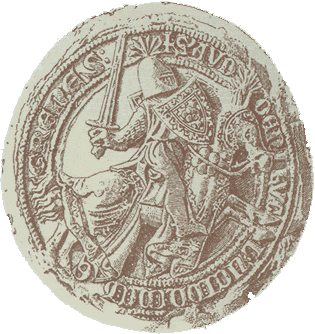
Audun Hugleiksson (Hestakorn) was a Norwegian nobleman at the end of the 13th century. He was the king's right hand, both under King Magnus Lagabøte and King Eirik Magnusson. He was seen as an important politician and lawman in his time and played a central role in reforming the Norwegian law system.

The Frostating Court of Appeal is one of six courts of appeal in the Kingdom of Norway. The Court is located in the city of Trondheim. The court has jurisdiction over the counties of Trøndelag and Møre og Romsdal. These areas constitute the Frostating judicial district. This court can rule on both civil and criminal cases that are appealed from one of its subordinate district courts. Court decisions can be, to a limited extent, appealed to the Supreme Court of Norway. There are 19 permanent judges on this court. The chief judicial officer of the court is currently Sven-Jørgen Lindsetmo. The court is administered by the Norwegian National Courts Administration.
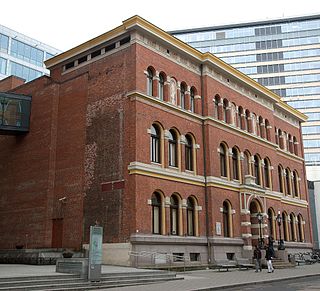
The Borgarting Court of Appeal is one of six intermediate courts of appeal in the Kingdom of Norway. The Court is located in the city of Oslo. The court has jurisdiction over the counties of Oslo and western Viken. These areas constitute the Borgarting judicial district. This court can rule on both civil and criminal cases that are appealed from one of its subordinate district courts. Court decisions can be, to a limited extent, appealed to the Supreme Court of Norway. The court has 62 judges and 45 administrative staff. The chief judicial officer of the court is currently Marianne Vollan. The court is administered by the Norwegian National Courts Administration.
The court of appeal is the second level of courts of justice in Norway, reviewing criminal and civil cases appealed from the district courts. There are six courts of appeal, each covering a jurisdiction and based in a city. Each court is led by a senior judge president (førstelagmann) and several appellate judges (lagdommer). The courts are administrated by the Norwegian National Courts Administration. Decisions from civil and criminal matters, except the question of guilt, can be appealed from the courts of appeal to the Supreme Court.

Andreas Aagaard Kiønig was a Norwegian lawyer and judge. He served as a representative at the Norwegian Constitutional Assembly.
Law in Norway follows a civil law system. The Supreme Court is the highest in the nation, with 20 justices.
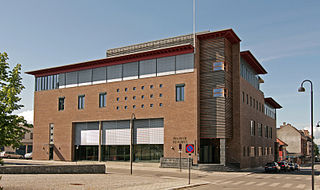
Hedmarken District Court was a district court in Innlandet county, Norway. The court existed from 1588 to 1777 and again from 1992 until 2021. It served the Hedmarken area which included the municipalities of Hamar, Løten, Ringsaker, and Stange. The court was based in Hamar. The court had one chief judge, four other judges and two deputy judges, as well as an administrative staff of 12. Cases from this court could be appealed to the Eidsivating Court of Appeal in Hamar.
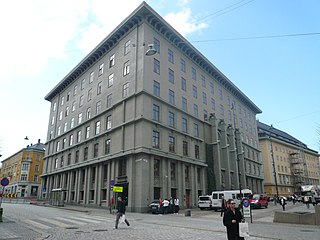
Nordhordland District Court was a district court in Norway serving the Nordhordland and Midhordland in Hordaland county, as well as Gulen Municipality in Sogn og Fjordane county. The court served the municipalities of Askøy, Austevoll, Austrheim, Fedje, Fjell, Fusa, Gulen, Lindås, Masfjorden, Meland, Modalen, Os, Osterøy, Radøy, Samnanger, Sund, Vaksdal, Voss, and Øygarden. The court was subordinate to the Gulating Court of Appeal. The court was led by the chief judge. The Nordhordland District Court was co-located with the Bergen District Court at the Bergen Tinghus at Tårnplads 2 in Bergen.
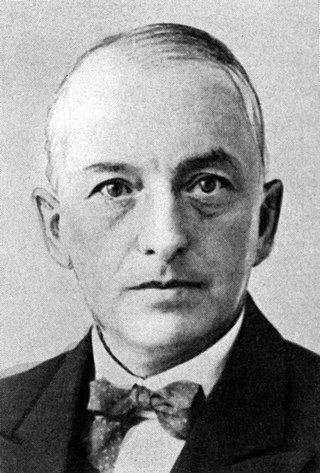
Carl Emil Christian Bonnevie was a Norwegian jurist and peace activist. He also served as a Member of the Norwegian Parliament.
The Borgarting was one of the major popular assemblies or things (lagting) of medieval Norway. Historically, it was the site of the court and assembly for the southern coastal region of Norway from the south-eastern border with Sweden, westwards to the today's Risør in Aust-Agder.

Magnus Lagabøtes bylov was promulgated for Bergen in 1276 during the reign of King Magnus VI of Norway. Oslo, Trondheim and Tønsberg received their own versions of the City Law about the same time, without the exact year being known for when they were adopted. The City Law was based on the State Law of Magnus Lagabøte, adopted in 1274, and the Bjarkøyretten, Trondheim's old city law, which came into force during the 1100s. Audun Hugleiksson was instrumental in the design of the law.

Magnus Lagabötes landslov was a law covering the whole of Norway, issued by King Magnus VI of Norway between 1274 and 1276. The law was the first to apply to Norway as a whole and is one of the first examples of comprehensive national legislation from a central authority in Europe. The law is the reason that the king was given the name Lagabøte, "the one who improves the law".